- Version
- Download 17
- File Size 810 KB
- File Count 1
- Create Date May 29, 2023
- Last Updated May 29, 2023
Stakeholder perceptions about the establishment of medical simulation-based learning at a university
Abstract
Background
Simulation based learning (SBL) is a technique where teachers recreate “real life” clinical experiences for health care teams for purposes of gaining clinical skills in a safe environment. There is evidence that SBL is superior to the traditional clinical teaching methods for acquisition of clinical skills. Although it is well established in resource rich settings, there is limited experience in resource limited settings and there is uncertainty regarding how SBL will be perceived among the stakeholders in medical education. As part of the steps leading to implementation of a SBL program at a university in Uganda, we sought to describe the perceptions of various stakeholders regarding the introduction of SBL methodology into learning at a medical school in Uganda.
Methods
We conducted a formative qualitative assessment using key informant interviews (KIIs) among faculty members and university administrators and focus group discussions (FGDs) among medical and nursing students at Mbarara University of Science and Technology. Data were collected till saturation point and were transcribed and analyzed manually using open and axial coding approaches to develop themes.
Results
We conducted seven KIIs and three FGDs. Overall, findings were categorized into five broad themes: 1. Motivation to adopt simulation-based learning 2. Prior experience and understanding of simulation-based education 3. Outcomes arising from introduction of medical simulation 4. Drawbacks to establishment of medical simulation; and 5. Potential remedies to the drawbacks. Overall, our data show there was significant buy-in from the institution for SBL, stakeholders were optimistic about the prospects of having a new method of teaching, which they perceived as modern to complement the traditional methods. There was significant knowledge but very limited prior experience of medical simulation. Also, there was some concern regarding how students and faculty would embrace training on lifeless objects, the human resources needed and sustainability of simulation-based learning in the absence of external funding.
Conclusion
Stakeholders perceive SBL positively and are likely to embrace the learning methods. Concerns about human resource needs and sustainability need to be addressed to ensure acceptability.
Peer Review reports
Background
Simulation based learning (SBL) is a technique where teachers recreate “real life” clinical experiences for health care teams for purposes of gaining clinical skills in a safe environment [1, 2]. SBL provides the opportunity for immediate feedback thus enhancing and promoting experiential learning. There is evidence that SBL is superior to the traditional clinical teaching methods for acquisition of a wide range of skills [3]. There is also growing evidence to show that simulation-based learning is superior to problem-based learning for the acquisition of critical assessment and management skills, particularly for clinical emergencies [4, 5]. During SBL scenarios, manikins are used to simulate real medical conditions for learners to work in teams to manage the condition like they would in “real life”. Thereafter, the facilitator guides the post scenario discussion for learners to share frames of practice and hence learning [1].
Although the effectiveness of SBL has been demonstrated [6], almost all the experiences are from resource rich settings. This teaching methodology is new in sub Saharan Africa and there is a need to examine its potential in these new settings. There is keen interest to introduce SBL in sub Saharan Africa, but there is concern that its introduction may be met with skepticism regarding its effectiveness or the capability of institutions to implement it.
The population in sub Saharan Africa is rapidly growing and so is the demand for more health workers. To meet these demands, medical schools are increasing their intake of medical students. However, the training infrastructure and staffing are not growing at the same rate. The first step to provide better quality of care begins with how healthcare professionals are trained [7]. Due to the growing number of medical students, there is limited opportunity for them to apply theory into clinical practice, and this may lead to the overall feeling of unpreparedness to handle patients [8]. Globally, health care education is evolving towards a competence-based approach [9]. These needs have been addressed by adopting and implementing innovative teaching technologies like SBL [7].
The Faculty of Medicine at Mbarara University and partners from Stavanger Acute Medicine Foundation for Education and Research (SAFER), Norway and University of Calgary, Canada collaborated to establish a simulation center of excellence at Mbarara University of Science and Technology (MUST). This Simulation Center at MUST is the first of the kind in the East African region. The main aim of the partnership was to establish a regional center of excellence in simulation training, research and skills enhancement among pre service and in-service health personnel mainly in maternal and child health and also support other clinical departments to adopt for simulation teaching.
Prior to the implementation of SBL, and in the early phases of implementation, we sought to understand the perception of key stakeholder towards SBL. Given the novelty of the methodology, it is important to understanding how learners, educators and other stakeholders feel about SBL. Therefore, we conducted a formative qualitative assessment to describe the perceptions of key stakeholders towards establishment of simulation based learning and the potential role of simulation based learning in medical education at Mbarara University of Science and Technology, southwestern Uganda.
Methods
Setting
Mbarara University of Science and Technology (MUST) is a public university and is located 286 km, southwest of the capital city Kampala. Opened in 1989 the University’s Faculty of Medicine offers undergraduate training in Medicine, Nursing, Pharmacy, Physiotherapy and Medical Laboratory Science. The Bachelor of Nursing Science course (BNS) is a four-year course and Bachelor of Medicine and Surgery takes 5 years to complete. The University uses predominantly didactic approach through traditional lecturers, demonstration in the clinical skills laboratories, community placements at primary health care facilities and bed side teaching at the university’s teaching hospital.
Study participants
The study participants included faculty members at MUST, specifically heads of department in the Faculty of Medicine, and members of the top administration at the University, and students enrolled in the Bachelor of Medicine and Surgery, and Bachelor of Nursing Science programs. We purposively selected the potential participants based on their key positions as stakeholders in teaching, learning and administrative decision making. We used key informant interviews for the administrators and department heads because these are a small group of people and were from different backgrounds of expertise and administration. In addition, each of them had considerable knowledge in the introduction and adoption of new teaching methodologies which would be best captured in an individual interview rather than a group discussion. We enrolled both medical and nursing students that had recently been introduced to SBL sessions at the newly opened simulation center, and those that had not been exposed at all to these sessions. And because the student numbers were larger, and due to our interest in examining group dynamics related to perceptions of simulation, we opted to use focus group discussions with them.
Data collection methods
We designed an exploratory qualitative tool and administered this through Focus Group Discussions (FGD) and semi-structured key informant interviews (KII) to explore prior experience and perceptions towards SBL. We opted to use FGD due to large student numbers, and our interest in examining group dynamics related to perceptions of simulation. The tool included questions to identify the roles that faculty should play in the establishment of the simulation center and how or even whether this training should fit in the undergraduate medical education curriculum as well as determine the opportunities that the Simulation center may bring to MUST. We used this approach because medical simulation (MS) is a new teaching method at the University. Interviews and FGDs were conducted between the month of April and May 2017. Each KII lasted between 30 and 40 min. The FGDs comprised 7–9 students each and lasted for approximately 1 h.
Data collection was carried out by a trained and experienced researcher who was not a member of staff at Mbarara University and was not part of the simulation implementation team. Data were collected till the saturation point was reached (when no new information was generated in the FGDs and KIIs). We assessed the patterns, categories and variety of the new information generated to determine that saturation had been reached.
All interviews were conducted in English and were audio-recorded.
Data analysis and coding
The audio files were transcribed verbatim into text and analyzed using thematic content analysis based on a priori themes generated from the research questions and emerging themes from the data. Data were analyzed manually. Three investigators (JN, CK and FB) read the transcripts and each independently generated codes from the transcripts and all authors reviewed the codes. We used two stages of coding; open and axial coding as has been described elsewhere [10]. At the open coding stage, we broadly explored perceptions from the stakeholders and examined features that were common in the data. At the second stage of (axial) coding, we used both inductive and deductive approaches to relate the together the codes that were generated in the first stage. The similar codes were grouped together to constitute or reflect the emerging patterns or themes i.e. thematic approach [11, 12].
Human subjects issues
We submitted the proposal to Mbarara University Research Ethics committee and received approval. The study was registered at the Uganda National Council of Science and Technology. We obtained individual written informed consent from key informants and participants of the focus group discussions. We obtained written informed consent from all the study participants. Data were collected in private spaces with no intrusion. We ensured that all interview data were kept confidential by providing a unique identification number to identify the data. Only the participants’ identification number was included on the transcripts and audio files. All data were stored in password protected computer files and audio files were discarded after use. The interviews were carried out by an independent researcher who was not known to all participants. To ensure confidentiality of the respondents, particularly, given the small number of the key informants, we do not provide the specific job titles of the respondents.
Results
We conducted 7 key informant interviews and these comprised representatives from the different clinical departments in the faculty of medicine namely Obstetrics and Gynecology, Pediatrics, Surgery, Internal medicine and the Institute of Maternal & Child Health. We also interviewed two representatives from the University administration.
We conducted three FGD with the undergraduate Medicine and Nursing students. One FGD comprised medicine students in year 4 and 5. The second one comprised year 3 nursing students and the third was a combination of both nursing and medicine students and the full

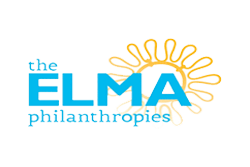
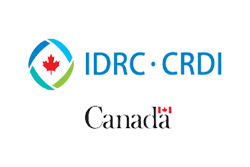
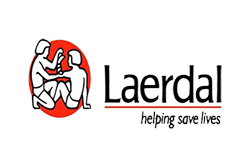

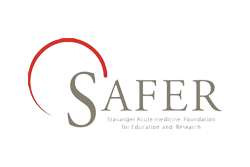
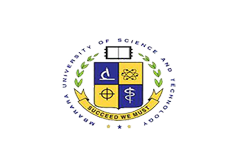

Leave a Reply